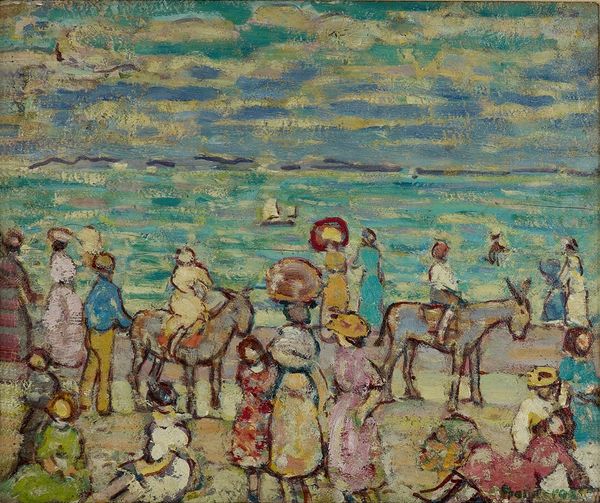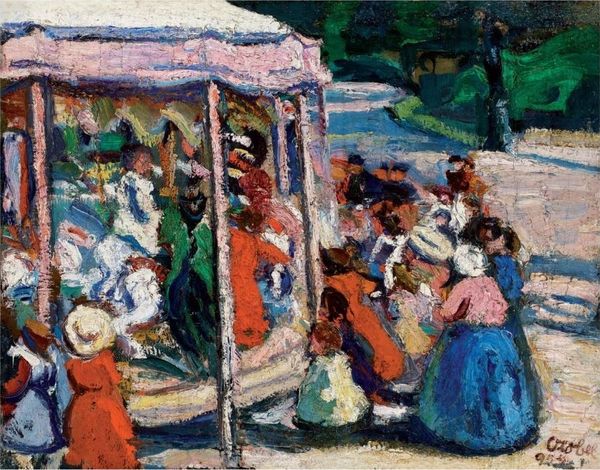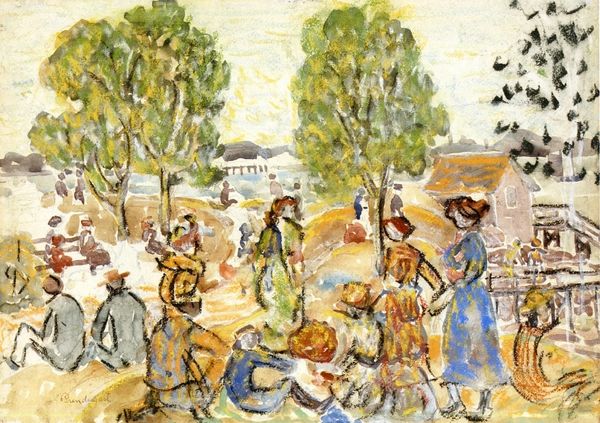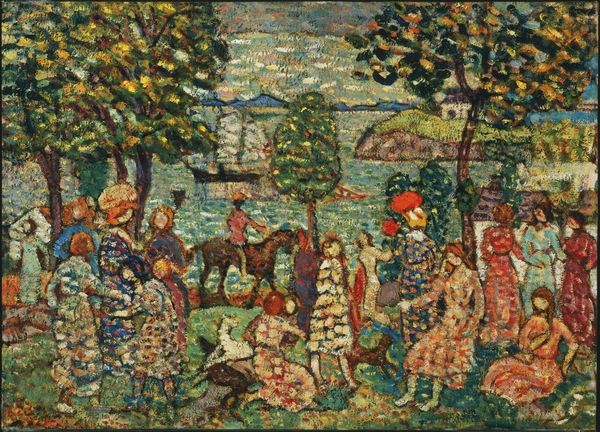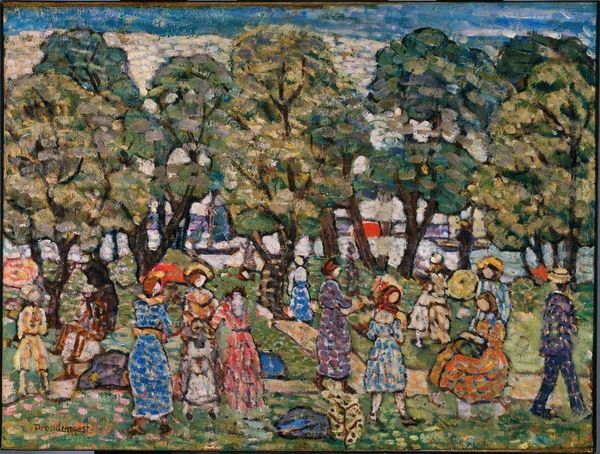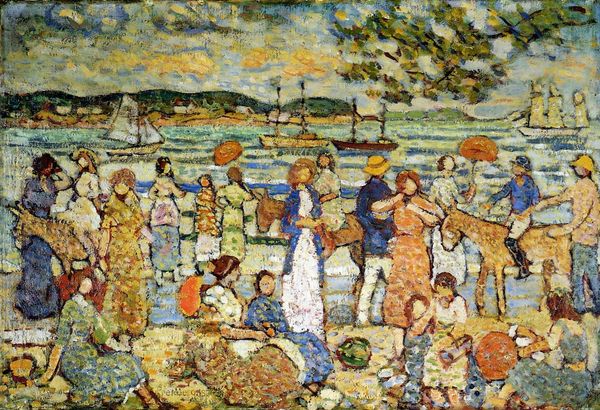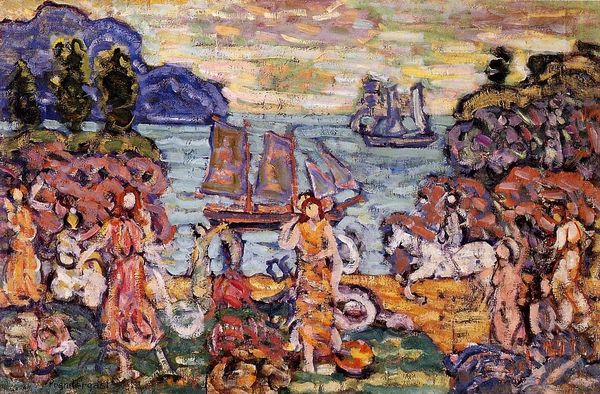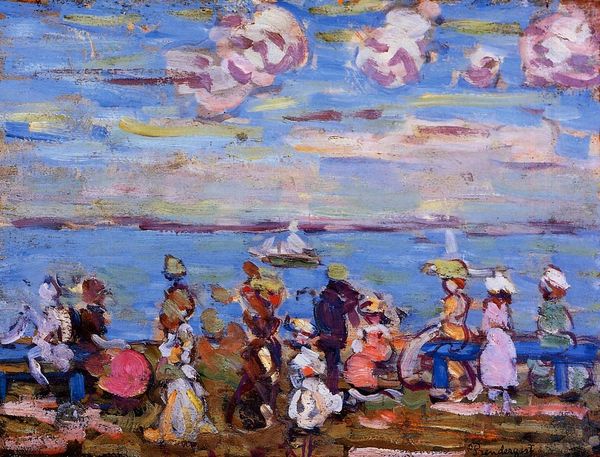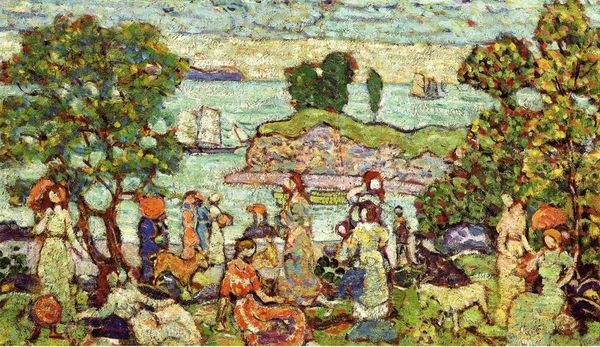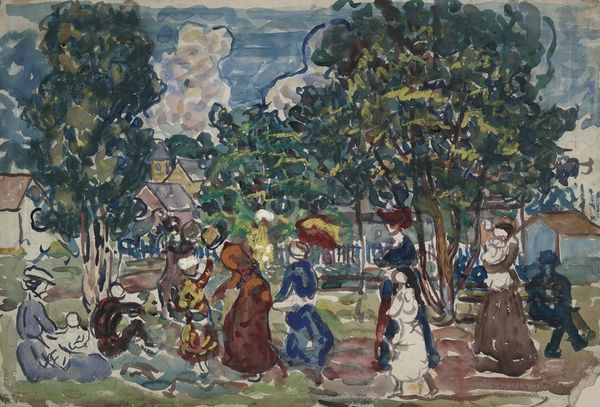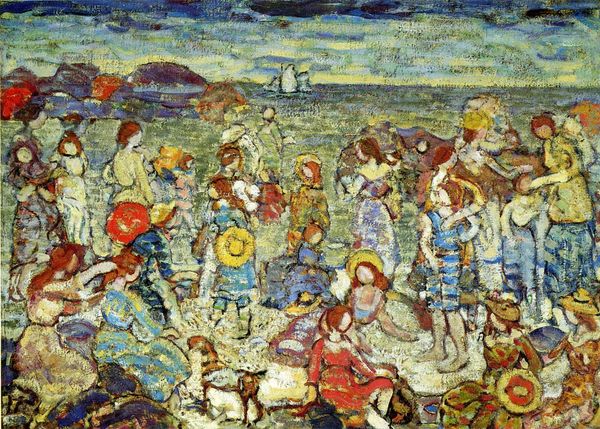
Dimensions: 38.1 x 50.8 cm
Copyright: Public domain
Curator: Here we have Maurice Prendergast’s "Merry Go Round" from 1913. Its vibrant colors and lively brushstrokes immediately suggest a joyous and bustling scene. Editor: Indeed, the naivete is palpable. But to me, it also hints at the limitations of leisure and privilege in Prendergast's era, given that the spaces for joy, particularly public spaces like the one presented in this picture, have often excluded certain bodies. Curator: I see your point, yet consider the composition. The layering of the carousel, figures, and landscape flattens the space, almost creating a tapestry of interconnected forms and colours. The artist prioritises surface pattern over deep recession, which subverts the traditional illusionistic strategies. The effect is one of harmonious confusion. Editor: Harmonious for whom? I see an intentional obscuring. Notice the indistinct faces, the near uniformity of figures. The upper classes and emerging bourgeoisie fill their canvases while actively sidelining working-class individuals, their labours, and lived experiences. Can we even see reflections of marginalized people represented in these scenes of so-called leisure? I wonder… Curator: Setting aside that provocative question, it would be interesting to analyse Prendergast's application of broken colour, derived from Impressionism but applied with a Post-Impressionist sensibility. See how the juxtaposed dabs create luminosity and movement, evoking the sensation of light on a summer's day. Editor: Again, light for whom? It may also be prudent to ask how the historical context influenced the visual language we now know as Impressionism and Post-Impressionism and why it has had such lasting power. Can art created during highly politically unstable eras divorce itself completely from power struggles that defined gender and class dynamics? Curator: One can choose to see it as a celebratory rendition of modern life, where the aesthetic innovations create a visually captivating world… a space removed from, or perhaps elevated above, historical tensions. Editor: Perhaps... But it is hard for me not to see the selective focus. How often did artists working during periods of stark economic inequality fail to reflect this dynamic in scenes of the affluent’s enjoyment? And what can that mean in terms of their role as silent reproducers of unbalanced status quos?
Comments
No comments
Be the first to comment and join the conversation on the ultimate creative platform.
